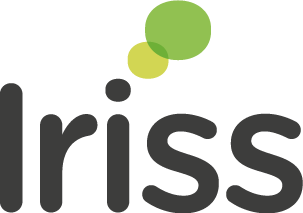I feel incredibly grateful to have worked with and co-written a play called Healing Pitch alongside four care-experienced young people as part of my PhD at Glasgow Caledonian University (GCU). Healing Pitch weaves together the young people’s words, poems, and stories into a creative retelling of their experiences of care, their passion for football and mental health journey.
With support from the GCU Magnus Fund and Hidden Route theatre company, we filmed a staged reading of the play. My hope is that the film will become a resource for social work education - something that inspires students and practitioners to explore new and diverse ways of working alongside children, young people, and families.
I am currently sharing the film through online webinars and in-person screenings. Recently, I sat down with Hannah (from Iriss) and Cieran, one of the actors in the play who is also care experienced, to reflect on a screening with social work students from GCU. Our conversation covered many themes, which I have mapped out in this blog. Each theme begins with an audio clip, followed by a narrative summary.
My hope is that this blog not only shares insights behind Healing Pitch, but also sparks ideas, reflections, and conversations. Most importantly, I hope it contributes to action and change in practice, and I welcome anyone to get in touch who wants to continue the discussion.
Research that feels real
From the very first reading of Healing Pitch, Cieran knew it was 'his jam.' The project felt like a great fit - creative, but also rooted in experiences he understood. The script also resonated with other cast members, and one actor was moved emotionally, though not care experienced, found parts of her character’s story mirrored her own. Emily also remembered an actor leaving rehearsal saying the play had changed how she thought about and understood her care experienced friends.
For Cieran, the project showed why the play matters because he feels it fills a gap he does not see enough in theatre or film. Hannah reflected that while some professionals assume students come into social work knowing what to expect, many are surprised by what they encounter. Cieran agreed, adding that care isn’t talked about enough, and that the arts can make these conversations accessible. Emily explained that when they asked students what they appreciated about the play, many said it felt real and authentic because the language mirrored what young people would say. Too often in research or reporting, young people’s words appear as short quotes scattered in a document written from an adult’s perspective. Here, the dialogue in the play carried the voices of care experienced young people.
Being seen, being validated
One care experienced person said they felt 'validated' and 'seen,' and that more care experienced young people should have access to the film, so they don’t feel alone. For Cieran, this sparked ideas about making the play part of wider events. He imagined social work departments inviting both young people and practitioners to screenings, creating opportunities to meet, share, and reflect together. Emily agreed, noting that while many participation projects already exist, some can involve long-term commitment, which might put some young people off. An event, with no pressure and no expectations, could feel more accessible for some careexperienced young people.
Hannah added that this matters because some people can value the experience of being in a room where a story resonates, without the demand to do more. Cieran summed it up clearly - if he could change one thing in the care system, it would be to create more opportunities for young people in care to meet each other in informal, welcoming spaces. No sign-up, no surveys, just turn up, and see what you get from it.
Learning through stories
For Cieran, the filmed reading is an important resource for social work education, but with further development it could also reach other audiences, raising awareness more widely. He imagined organisations like Creative Scotland backing such a project because of its potential to connect different groups of people.
Hannah picked up on this point, noting that creative stories like Healing Pitch can resonate beyond academic settings. Iriss works with practitioners to highlight that research isn’t confined to dissertations or reports, it can take many forms - Practitioner Research with NQSWs: Inspiration from practice. She described how practitioners can feel alienated by academic writing, with its 'bog standard professional language' that makes young people’s verbatim quotes look out of place. By contrast, creative methods give permission to notice themes in practice and respond to them differently, whether that’s redesigning a family room or rethinking how young people’s voices are recorded.
Emily added that this is why the film is important, as it gives educators and practitioners a flexible resource. Instead of requiring an hour in a theatre, sections of the film can be used as prompts in teaching and training. For example, one student suggested sharing it with foster carers to explore family dynamics when a new child is placed in a home. Emily explained that clips can become conversation starters around themes like trauma-informed care, stigma, and shame to encourage practitioners to move beyond training sessions and reflect on how their daily practice supports young people without defining them by their care experience.
How to avoid tokenism
Hannah reflected on the spectrum of involvement with lived experience, and that sometimes people feel comfortable to share and at other times, experiences can sit in the background. She explained that young people should have the choice to engage at the level that feels comfortable to them, without being forced into narrowly defined roles.
Cieran emphasised that the film, in its current form, captures this balance. It feels 'raw' and close to the voices of the young people who shaped it, almost like being in the room with them. That immediacy, he explained, makes it an important tool for students and practitioners. Hannah added that using film clips avoids some of the pitfalls of inviting people to share their personal stories live, which can be constrained by agendas or time limits. Instead, the film creates space for discussion and reflection that is less pressured, but still authentic.
For Cieran, this authenticity stemmed from trust. Because Emily had built strong relationships with the young people, they felt safe enough to share honestly, including things they chose not to publish. Emily explained that this process was central to avoiding tokenism. Involving young people meaningfully meant taking time, setting clear boundaries, and allowing them to shape what was or wasn’t included in the final script. As she put it, the play is a re-presentation of their stories - authentic, but not exploitative.
Writing with the reader in mind
The conversation turned to professional writing and the way social workers record people’s lives in case notes, chronologies, and files. Hannah reflected on how demanding this task can be. Professional records must analyse situations and provide an evidence trail for decisions, but they also should be personal documents if the people concerned later read them. Too often, young people describe feeling unseen or uncared for when they encounter their files.
Cieran argued that this is why Healing Pitch works because if the stories had been presented as a '40-page report,' they would have lost their relatability. A play, by contrast, draws people in and creates awareness in a way written documents rarely can.
Emily linked this to the legal right of young people to access their files. She recalled one participant who found reading their record confusing, because it didn’t match how they remembered events. For Emily, this underlined the need for practitioners to write with care, noting their own perspective without assuming it was the only truth, and always imagining the person themselves as the reader. That ethos guided her in shaping the play - holding the young people’s presence in mind while editing and re-drafting their words.
Hannah agreed, noting the clear parallel with social work practice. Just as Emily took time to check, edit, and return the script to young people for approval, practitioners ideally need space to write with accuracy, analysis, and kindness. Time pressures often prevent this, but the aspiration remains - records should be both useful and humane. Emily added that cultivating 'professional curiosity' and staying reflective about one’s own biases and pressures might help practitioners balance these competing demands.
Hannah suggested that even small acknowledgements in files, such as noting that a young person might have experienced something differently, could soften the narrative, making it easier for them to read their history and still feel seen.
Building relationships, respecting dignity and being curious
Cieran shared the contrasting experiences he had with two social workers. One built a relationship informally - no lanyard, no notebook, just a coffee with his grandad and time spent talking and listening. The other was focused on questions and checklists, which felt more like an interrogation. For Cieran, the difference was clear; it was the first approach that made him feel comfortable and respected.
This led into a wider reflection on dignity in practice. Emily highlighted how students were encouraged to see themselves as 'agents of change,' able to challenge systems while still meeting statutory duties. Hannah added that mismatched expectations often burden care experienced young people with levels of responsibility or 'box-ticking' that their peers outside of services would not face. For Cieran, this was summed up by one audience member’s question: 'Why do young people need to tick all the boxes?'
Not every story is negative though. Cieran described how his social worker championed his voice in children’s panels, insisting others pause to let him speak. For him, this was a 'gleaming' experience - the kind of practice that needs to be more widely available, rather than the exception. Emily connected this to the importance of not just hearing young people’s voices but supporting their agency; ensuring they are part of decisions, not simply subjects of them.
The group agreed that relationships are rarely straightforward; they can be messy, nonlinear, and shaped by context. What matters is the willingness to adapt - to 'do the dance,' as Hannah put it - moving carefully, curiously, and respectfully.
Finally, they reflected on the unique role of theatre in making this complexity visible. Unlike a formal report, a play invites multiple interpretations, prompting audiences to think and feel differently. Emily noted that this openness challenges practitioners to consider how the stories sit with their own experiences, values, and roles. For Cieran, that unpredictability is the beauty of theatre - you can’t control the audience, and that freedom is what allows authentic reflection.
When Cieran was asked for one piece of advice for newly qualified social workers, Cieran kept it simple - focus on relationships first, take time, and avoid jumping to conclusions. As he put it: 'Walk around it first and then come to a conclusion. Do the dance.'
Using Healing Pitch
Healing Pitch can be used in lectures, training, and practice development sessions. Clips can open up discussion on relationships, dignity, trauma-informed care, and agency. More than anything, the film invites reflection, not neat answers, but honest, conversations about what it means to listen and respond. When stories are shared carefully, and voices are heard on their own terms, they can shift the way we see, feel, and act.
Links to Iriss resources
Writing analysis in social care
We'd like to say a huge thank you to Cieran for his continued involvement and expertise.



